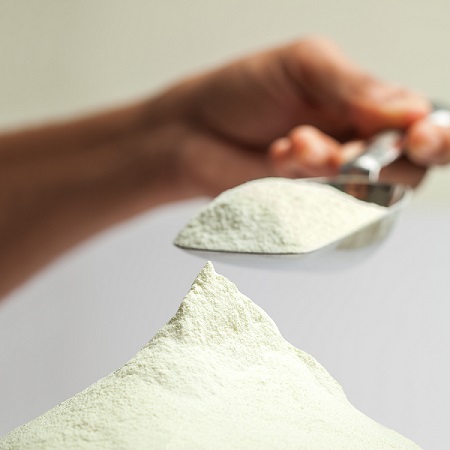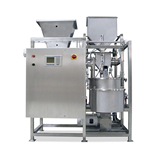Postdoctoral Research Associate Debolina Das whose research titled "Solid-Phase Cystallisation of spray-dried glucose powders: a perspective and comparison with lactose and sucrose" won Best Research Paper Award at the annual Chemeca Conference says her project investigated the tendency of spray-dried glucose based powders to crystallise over time.
The results of Das's analysis could mean better scale-up and prediction of crystal growth in commercially produced lactose-based powder products.
"Spray-drying is a method of producing a dry powder from a liquid or slurry by rapidly drying with a hot gas," she said.
"All spray dryers use some type of atomiser or spray nozzle to disperse the liquid or slurry into a controlled drop size spray.
"We compared molecular dynamic simulations with empirical theory and now have a new view on the 'activated-rate one', or put simply the chemical reactions involved in the spraying-drying process of glucose powders."
Das's Ph.D. supervisor Professor Tim Langrish, Head of the School of Chemical and Bimolecular Engineering, says Das's work will assist in the engineering of new combined approaches to controlling the particle properties of sprayed-dried glucose products.
Professor Langrish, a world leader in drying technologies explained the current dilemma: "At the moment, the spray-drying methods used often result in powder agglomeration and caking that may cause the powder to degrade quickly.
"Imagine the powder as a bowl of tangled spaghetti, obviously there will be gaps in the mass. These gaps allow the powder to absorb moisture, allowing bacteria to grow.
"If we can develop improved spraying methods we can reduce stickiness, improve the yield from processing and to improve the properties in storage and use.
"This is significant for products such as powdered milk which Australia produces and distributes globally."
According to Professor Langrish, Australia is a trusted source of milk powder with up to 80 per cent of our supplies exported.
"Milk powder is added to liquid milk products, particularly in tropical climates where fresh milk supplies are not available," he said.
"It is also used confectionery and milk chocolates, processed meats, ready-to-cook meals, baby foods, ice-cream, yoghurt, health foods and reduced-fat milks."



-160x160-state_article-rel-cat.png)
-160x160-state_article-rel-cat.png)

-160x160-state_article-rel-cat.png)









-160x160-state_article-rel-cat.png)





